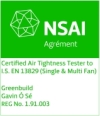01 December 2017 - Irish Politicians in Infra Red
During the course of this year Gavin Ò Sè, our principal thermographer, has by accident or design been present at a few events attended by reasonably high profile Irish politicians, and Gavin had one or other of the thermal imaging cameras with him at each of these occaisions.
These were all hastily taken images, and not necessarily with the best of thermal imaging settings or focus chosen in the time available, or visible image camera on the ready.
But they are a bit of crack!
| At the NZEB Conference, Enniscorthy. Co. Wexford, March 2nd 2017. IMPAC 320x240 Camera Politicians included are: Pat Cox, Simon Coveney, Paul Kehoe, Michael Darcy |
|
 |
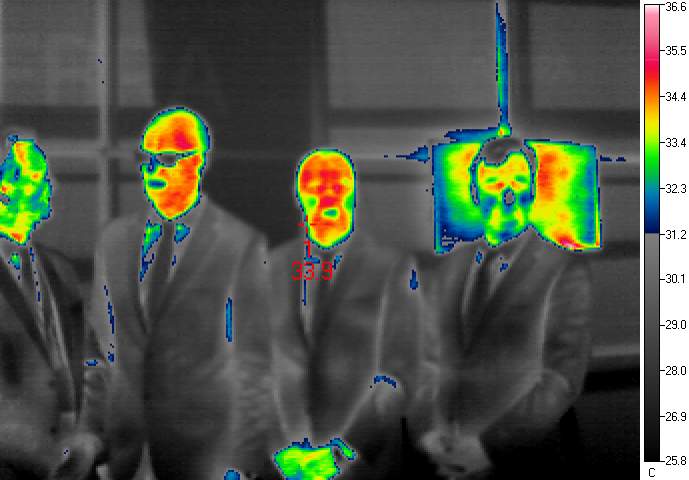 |
 |
 |
At the opening of a local community centre, Kilanieran. Co. Wexford. CAT S60 Fone with in built small FLIR camera. Sorry about the red faces on the kids - they are not our kids and so need not be identified. Politician: Leo Varadkar |
 | 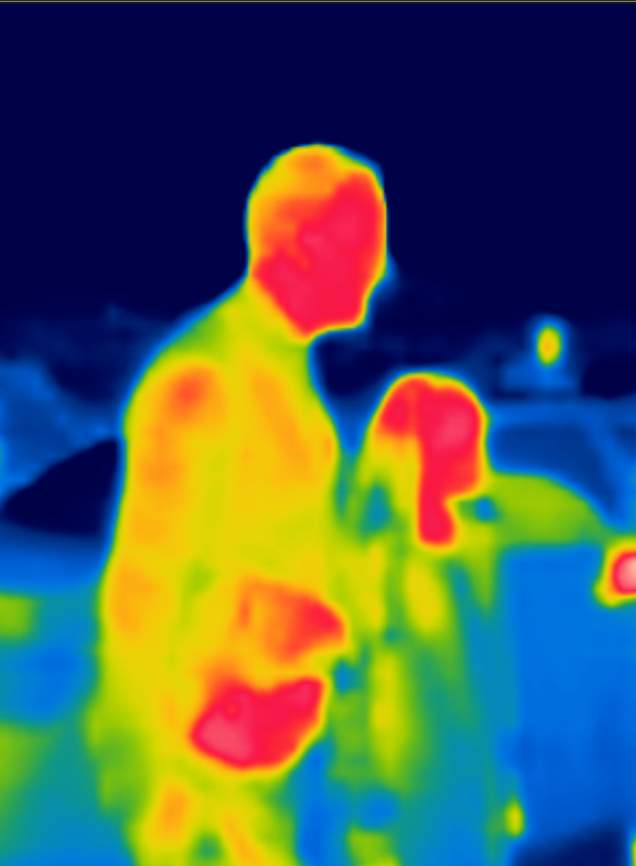 |
At the NZEB Conference, Whites Hotel Wexford town. SEEK 320x240 Camera. Politician: Eoghan Murphy |
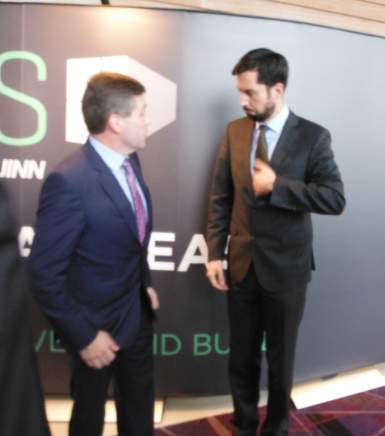 | 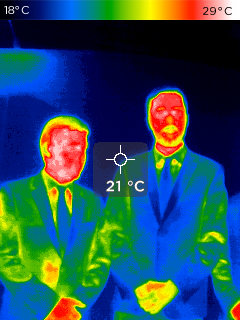 |
30 September 2017 - Passive House airtightness with sand/cement scratch coat
A recent test has come in significantly better than the Passive House standard of 0.6 ACH (@50Pa) for the preliminary test, with sand/cement scratch coat as the main airtightness layer.
We have tested several buildings with this construction method to Passive House standard before, but this result at about 0.23 ACH @ 50Pa is certainly amongst the best.
The main airtightness works apart from the render were done by , Clioma house , which we have mentioned before on this blog - no connection - they just do well.
On this site, some works had already progressed before Roman and his team could get going - so some of the details look less than ideal at first site, but it certainly proves itself under test. Of course, the site management is also very important, so well done to Alan Tyrell of Ballinlough Construction for keeping the other trades under control.
| Some of the details that go into such a good result - some of which are due to having to catch up with site work that had sped ahead.... | ||
 |
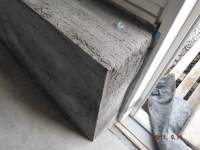 |
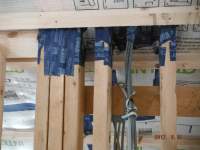 |
25 May 2017 - Passive House airtightness with sliding sash windows
Greenbuild has recently been pleasantly surprised by a house with many sliding sash windows testing significantly better than the Passive House standard of 0.6 ACH (@50Pa) for the preliminary test.
In this new home, the Munster Joinery triple glazed sliding sash windows make up about a third or two fifths of the glazing, the rest being various other Munster Joinery products.
Yes, the windows leaked a bit, but far less than we expected.
The house is a timber frame house produced by Shoalwater timber frame , which we have mentioned several times before on this blog - we have no connection to them apart from testing for them - but they just do very well, every time!
| Examples of the sliding sashes in place- despite which passive house airtightness levels are still being acheived | ||
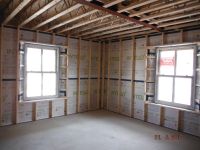 |
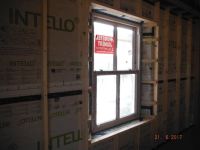 |
|
02 May 2017 - Large(er) Building airtightness Testing
During 2015 Greenbuild was the first testing company to be audited by NSAI for the new category of airtightness testing using 'multi-fan' equipment.
This allows us to use more than one standard blower door fan in an airtightness test.
The non-domestic Part L of the building regulations are currently up for review - and the proposal is that non-domestic building airtightness testing may become a requirement in Ireland in the next few years, at levels of 3 m3/hr.m2 and 5 m3/hr.m2, based on the building size.
If the building is relatively small - say the size of up to maybe 4 'standard' semi detached houses, or up to an envelope of about 2000 m2 and fairly airtight - say no more than about 3 m3/hr.m2, then actually many of the registered testers will be able to test with one fan as per the NSAI registration - including ourselves, and do please give us a call.
However, if the building is larger than that, or leakier than that, then several of the standard fans may be required, and we have noticed a small upswing in request for this type of testing - if you are a building owner/builder or another airtightness tester that has jobs coming in that you can't service as you don't have the capacity, then please give us a call to discuss.
| Some examples of larger buildings tested by Greenbuild | |||||
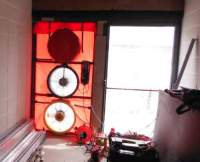 |
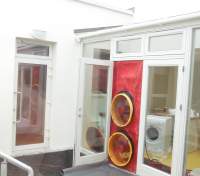 |
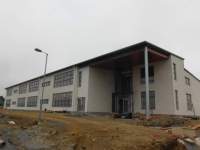 |
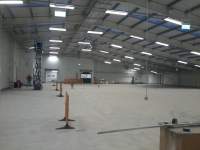 |
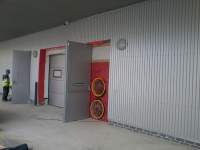 |
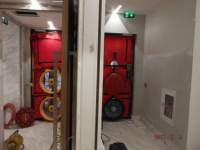 |
24 April 2017 - Downlighters and airtightness
Downlighters are often a source of considerable air leaks in a building. They can be a primary leak, say where they are installed into a roof space open to an attic that is open to outside, or they may be a secondary leak, where they are in a void that should be sealed, but isn't, such as the space between upstairs and downstairs.
When advising on airtightness, we would often recommend fitting downlighter hoods on accessible downlighter, where a sealed box or pot is placed over thelight, with enough space for some air circulation (but not infiltration!) around the back of the units. However, in many cases there is no access to the rear of the unit as they are in these intermediate floor voids or sloping ceilings.
We recently did some testing for Sean O Sullivan of Northarc Builders in Kildare, who could not use hoods or pots on many of the fittings, so he used wet room sealed downlighter units, plus simple nice finishing around - the result is neat and works well for airtightness.
| Well finished downlighter | Even with many downlighters, an airtight finish |
 |
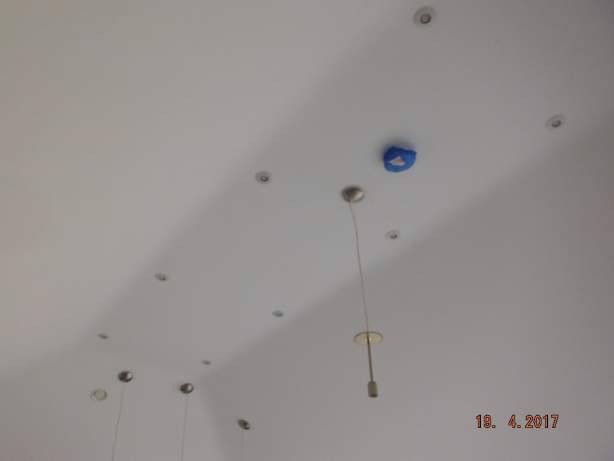 |
30 January 2017 - 2016 in Airtightness
Just for interest: the best and worst tests of the year in 2016
| Best Air Permeability test | Worst Air Permeability tested New build |
Worst Air Permeability tested Existing |
|
| 1 | 0.27 | 9.44 | 13.78 |
| 2 | 0.32 (twice) | 8.80 | 13.67 |
| 3 | 0.33 | 8.62 | 13.58 |
The readings are in m3/hr.m2.
What is interesting here is that the 3 best results are all from one site, the three worst results are also all from one site!
The other numbers, for existing houses, are all surprisingly close also, even though they are different houses. Unfortunately for the home owner, the worst result was a recently renovated house where a complete refurbishment was undertaken, but the heatability after refurbishment of the home was not what the homeowners expected, so Greenbuild was called in to try to diagnose the problem.

